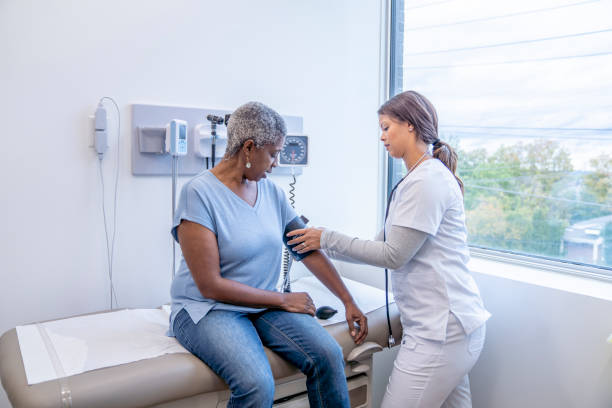Age-related Changes in Blood Pressure
Blood pressure (BP) refers to the force of blood against the
walls of blood vessels, typically measured in millimeters of mercury (mm Hg).
Blood pressure changes with age, and understanding these changes can be
important in maintaining good health and reducing the risk of hypertension and
its associated health problems.
In childhood, blood pressure is relatively low, but begins
to increase as people reach their teenage years. This increase is usually due
to growth and hormonal changes, and most people have a systolic blood pressure
(the upper number in a blood pressure reading) in the normal range (less than
120 mm Hg) by their early twenties.
In the early adulthood years, blood pressure remains
relatively stable, but as people reach their mid-40s to mid-50s, it begins to
increase again. This increase is generally due to aging-related changes in the
cardiovascular system, such as the gradual thickening and stiffening of the
walls of the blood vessels, which make it more difficult for blood to flow
through them.
As people continue to age, blood pressure continues to
increase, and by age 60 to 65, many people will have blood pressure readings in
the prehypertension or hypertension range. Prehypertension is defined as a
systolic blood pressure between 120 and 139 mm Hg or a diastolic blood pressure
(the lower number in a blood pressure reading) between 80 and 89 mm Hg, while
hypertension is defined as a systolic blood pressure of 140 mm Hg or higher, or
a diastolic blood pressure of 90 mm Hg or higher.
There are several factors that can contribute to the
increase in blood pressure with age, including:
Arteriosclerosis: Arteriosclerosis is the hardening and
narrowing of the arteries that results from the buildup of plaque on their
inner walls. This makes it more difficult for blood to flow through the
arteries, which increases blood pressure.
Changes in hormones: As people age, their hormone levels
change, which can affect blood pressure. For example, levels of the hormone
aldosterone can increase with age, which can cause the body to retain more salt
and water, leading to an increase in blood pressure.
Changes in the nervous system: The nervous system helps to
regulate blood pressure, and changes in this system with age can affect blood
pressure levels. For example, some older people may have a decreased ability to
respond to changes in blood pressure, which can result in higher blood pressure
readings.
Changes in kidney function: The kidneys help to regulate
blood pressure by controlling the amount of salt and water in the body. As
people age, their kidney function may decline, which can affect blood pressure
levels.
Despite these changes, it is still possible to maintain good
blood pressure levels as people age by making lifestyle changes, such as:
Eating a healthy diet: A diet that is rich in fruits,
vegetables, whole grains, and low-fat dairy products and low in salt, saturated
fat, and added sugars can help to maintain healthy blood pressure levels.
Maintaining a healthy weight: Being overweight or obese can
increase the risk of hypertension, so maintaining a healthy weight through diet
and exercise can help to reduce blood pressure levels.
Being physically active: Regular physical activity can help
to maintain healthy blood pressure levels, improve cardiovascular health, and
reduce the risk of hypertension.
Not smoking: Smoking is a major risk factor for
hypertension, and quitting smoking can help to lower blood pressure levels.
Limiting alcohol intake: Drinking excessive amounts of alcohol can increase blood pressure levels, so it is important to limit alcohol consumption to no more than one drink per day for women and two drinks per day for
Also read: How to Control Blood Pressure with Bodyweight Exercises








Leave a Reply